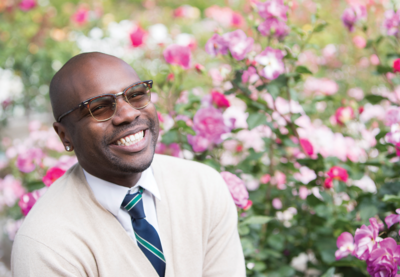I will never forget the last words I said to my class of third graders in the spring of 2020, at the start of the pandemic. The school had received notice that we would follow stay-at-home orders. My class was getting ready to leave. Students grabbed their backpacks and waited for the bell to ring. Once it rang, I said, “I’ll see you in two weeks. Please be safe. I love you all.” I never saw them in person again.
In addition to the deadly virus overwhelming the world, the United States faced a divisive presidential election and ongoing anti-Black and anti-Asian hate crimes, sparking a nationwide anti-racist movement. I felt a huge need to support my Black and Brown families, especially throughout the unrest our country experienced after the murder of George Floyd.
There was a huge weight on my heart. Trying to teach while protecting my students was definitely challenging. I was even more scared as a Black man and started to feel my mental and physical health take a downturn. This was one of the hardest times of my teaching career. So why did I decide to stay in this profession?
Prior to the move to distance learning, I was in leadership seminars for the Sacramento Mandarins Drum and Bugle Corps, a nonprofit working to transform lives through the performing arts. The in-person camps we held before COVID-19 were impossible now. The leadership staff and I worked for weeks to figure out how to provide students meaningful experiences. We planned a month-long curriculum that would meet the social emotional needs of the corps’ student leaders.
On top of this, I was finishing the year with my class. Yet, through planning for the camp’s student leaders, I realized building positive, healthy relationships with students sustained me. As the month went on, I started to understand the flow for distance learning—the nuances and skills needed to support students during this pandemic. The camp was a way to prepare for this.
As my school district got closer to distance learning, I decided to offer my passion for relationship building and my technical skills to other educators. While teaching remotely, many educators felt defeated by the technology. The district allowed me to lead a district-wide, online professional development session, and that became a pivotal moment in my career.
I told my colleagues, “We went into this field because we enjoy building relationships with students. Some of you have mastered this and have master’s degrees in this. We don’t have to let this computer take that away from us.” A waterfall of support and agreement cascaded into the chat. At this point, I realized my reason for staying in this profession—to uplift others and bring the field into the future.
The pandemic pushed me to rethink how students will be taught when school returns to some “normalcy.” My biggest takeaway from it all is the importance of social emotional learning, specifically socialization. Children want to talk to their friends. In every online session, students wanted breakout rooms so they could hang out and share their pets on camera—we had many pet parties and Zoom dances.
These are the moments my students will remember: when we came together and appreciated the community we built. While the students’ technology skills did develop, something else shined through, too. Their patience and forgiveness for others grew tremendously. They started to understand that some things in life are beyond our control, and sometimes we need to just take a breath and do the best we can. These are the life skills they will utilize as they navigate the world long after they’ve left my class. And that’s why I will keep teaching.
Share Your Story
What motivates you to get up each morning and serve students in our nation’s schools? We want to hear from you. Send your 600-word submission for the “Why I Teach” column to lfjsubmissions@splcenter.org.
